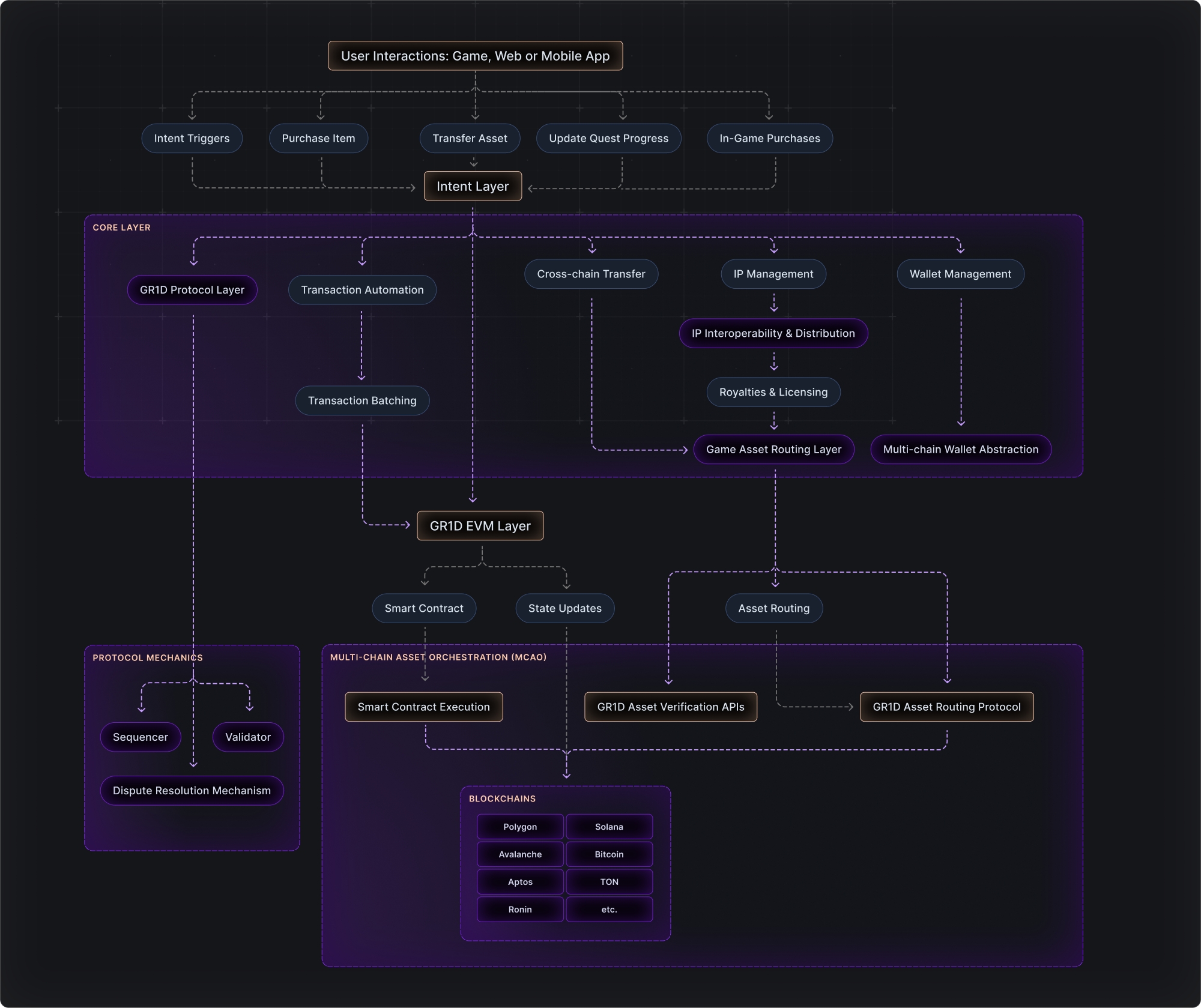GR1D Intent Architecture
Let’s dig into why intents are such a critical piece of GR1D’s design. If you’ve worked with traditional blockchain models, you know they focus heavily on transactions and the technical specifics of each operation—things like bridging assets or syncing data between chains. That’s fine for developers, but for users, it can make the experience feel clunky, especially in a multichain ecosystem. This is where GR1D’s intent-centric architecture flips the script.
In the GR1D Network, intents act as the universal language that the network understands. They abstract away all the underlying complexities of cross-chain operations, allowing users to interact with the system in a straightforward, context-driven way. Instead of dealing with the technicalities (like picking the right bridge or managing different tokens across chains), users simply express their desired outcomes—things like “transfer this digital collectible from Chain A to Chain B” or “purchase chain A asset from chain B with 1-Click” GR1D’s Intent Layer then takes care of all the heavy lifting behind the scenes. Simplifying the execution of any complex use case.

Abstraction of Complexity
Think of intents as an abstraction layer that shields users and developers from the intricacies of cross-chain interactions. Users don’t need to worry about what’s happening under the hood—they just specify their intent, and GR1D handles the rest. This is huge for developers too. It means you don’t have to write specific code for each chain interaction, which frees you up to focus on building engaging and user-friendly applications. By simplifying the development process, GR1D allows you to create apps that are not only accessible but also scalable, drawing in a larger audience without the friction typically associated with blockchain tech.
Enabling Seamless Interoperability
Now, when we say “seamless interoperability,” we mean it. The Intent Layer is what makes this possible. It acts as the bridge (no pun intended) that lets users move assets, interact with applications, and perform actions across multiple chains without hitting technical roadblocks. For example, when a user initiates an action like “send this token from Chain X to Chain Y,” GR1D’s intent system steps in, managing everything—asset transfer, cross-chain communication, and verification—so the user doesn’t have to think about any of it.
For developers, this is a game-changer. You can build applications that span multiple networks, creating interconnected experiences that feel unified, even if they rely on different blockchains behind the scenes. This opens up a lot of possibilities for building immersive, cross-chain games and dApps that wouldn’t be feasible in a traditional, siloed blockchain environment.
Scalability and Efficiency Built-in
But it’s not just about making things easier for users and developers—intents are also a key part of GR1D’s strategy for scaling efficiently. The Intent Layer automates the processing of these high-level commands, which allows the network to manage complex interactions and high transaction volumes without breaking a sweat. This setup ensures that, as the GR1D ecosystem expands, the network remains fast and responsive, even when processing thousands of transactions or managing multiple cross-chain operations simultaneously.
For developers, this means fewer worries about performance bottlenecks or latency issues. GR1D’s architecture is designed to grow with the demand, meaning your applications can scale smoothly without requiring constant tweaks to handle increased traffic. You build it once, and the network handles the scaling, so you can focus on enhancing functionality rather than troubleshooting infrastructure.
